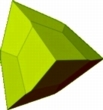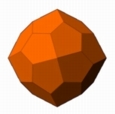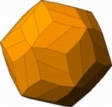Linguistic Topology
I. Juana Pelota-Grande
| ||||||||||||||||||||||||||||||||||||||||||||||||||||||||||||||||||||||||||||||||||
|
Table 1 OBV-IUS Renderings of Romance Languages | |
 |
 |
| Latin | Italian (rotate) |
 |
 |
| Spanish (rotate) |
Portuguese (rotate) |
 |
 |
| French (rotate) |
Romanian (rotate) |
|
Table 2 OBV-IUS Renderings of Slavic Languages |  |
 |
| Russian (rotate) |
Polish (rotate) |
|
Table 3 OBV-IUS Renderings of Germanic Languages | |
 |
 |
| High German (rotate) |
Low German (rotate) |
 |
 |
| Dutch (rotate) |
Afrikaans (rotate) |
 |
|
| English (rotate) |
|
|
Table 4 OBV-IUS Renderings of Afro-Asiatic Languages, and Persian | |
 |
 |
| Hebrew (rotate) |
Berber (rotate) |
 |
 |
| Arabic (rotate) |
Persian (rotate) |
|
Table 5 OBV-IUS Renderings of East Asian Languages | |
 |
 |
| Mandarin (rotate) |
Cantonese (rotate) |
 |
 |
| Japanese (rotate) |
Korean (rotate) |
|
Table 6 OBV-IUS Renderings of Sign Languages | |
 |
 |
| American Sign Language (rotate) |
British Sign Language (rotate) |
 |
 |
| French Sign Language (rotate) |
German Sign Language (rotate) |
|
Table 7 OBV-IUS Renderings of Finno-Ugric Languages |  |
 |
| Finnish (rotate) |
Hungarian (rotate) |
|
Table 8 OBV-IUS Renderings of Isolate Languages | |
 |
 |
| Basque (rotate) |
Burushaski (rotate) |
 |
 |
| Pankararú (rotate) |
Ainu |
The impressive array of analytic methods brought to bear on the problem is a testament to the inherent difficulty of the task. However, one of the human species' most amazing tools for analysis
Language and vision are two towering pillars of human cognition, yet the traditional bridge between them
Visual intuitions, while not necessarily rigorous, can point the way toward otherwise obscured solutions to numerous problems
The original eight dimensions included three basic dimensions for syntactic, morphological, and phonological information, as well as five more dimensions used to represent semantic and distributional information about the lexicon.
Factor analysis of the data allowed us to find a set of normalized independent basis vectors spanning the syntactic/
Similarly, we were able to collapse the five dependent dimensions of the lexicon down to three independent dimensions, which we call instinct, understatement, and schadenfreude. The three dimensions of the IUS co-
Thus we can reduce the eight original linguistic dimensions to three spacial and three color composite-
The genetic relationship is clear. Note that Romanian visually stands out from its sister languages, but the reasons for this are clear when we look at a couple of Slavic languages, in Table 2.
The mixed heritage of Romanian is made obvious by OBV-IUS. The pedigree of other languages which have blended to various degrees with genetically unrelated language families is similarly clear. Consider the Germanic languages, including the Romance-
The result of importing so much Latinate vocabulary and the long and intimate contact between Old English and Old French is the visually distinct appearance of English in the OBV-IUS system. In fact, it seems clear that English probably has as much claim to being a Romance language as Romanian does.
While Persian, an Indo-
Looking at the languages of East Asia in Table 5, it is unsurprising that the so-
French Sign Language and American Sign Language are genetically related, while American Sign Language and British Sign Language share a superstrate language (English). Note the particular similarities among those three, but also the superficially similar “shape” of German Sign Language. Also, note the similarities between each sign language and its superstrate language.
Table 7 shows a representative sample from the Finno-
Some of the singularly Isolate Languages show quite interesting and unusual features in their OBV-IUS renderings.
Table 8 shows the grammatical chaos of Basque, the unprecedented uniqueness of Burushaski, and the self-
The last entry in Table 8, Ainu, defies all logic and explanation. No wonder it is still an Isolate.
It is with much anticipation that we at the Centre den Geometrik Linguistiken await feedback on this revolutionary new theory from linguistics practitioners world-
In order to further harness this amazing innate capability, we at the Centre den Geometrik Linguistiken have devised a method of projecting large amounts of aggregate information about a language into a six dimensional space.
The results are remarkable
Sign Languages were more challenging to fit into our system, but with a little creativity, they were in fact made to conform. The various relationships between sign languages are interestingly portrayed by the OBV-IUS interpretation in Table 6.
OBV-IUS renderings of small language families and Isolate Languages play up the distinctive features of those languages and families which make them so hard to categorize.
This brief introductory paper offers merely a taste of what the study of Linguistic Topology has to offer the wider field. Visual analysis will eventually bring many Topological Universals to light, while also illuminating Topological Constraints on, for example, language change and acquisition.